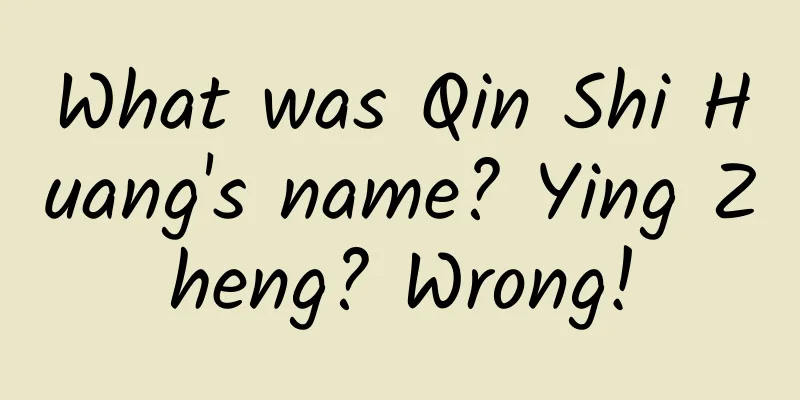Samsung's first Tizen phone review: a failed Android clone

|
After years of hype, we finally saw the world's first Tizen phone, the Samsung Z1. In fact, Samsung's expectation for Tizen has always been to be an "Android killer", hoping to gain user loyalty through the brand appeal and integrated services of the Galaxy series, and then seamlessly transfer them to Tizen, gaining absolute control over the system and hardware, and thus competing with Apple. Unfortunately, although Samsung became the largest Android brand and smartphone giant for a period of time, the good times did not last long. Since the S4, Samsung's smartphone sales have begun to decline, and until last year, sales and profits dropped sharply, forcing Samsung to temporarily give up the offensive and start defense. In other words, now is not a good time to give up Android and turn to Tizen. Under such circumstances, the market direction of Tizen mobile phones has also changed. In fact, the hardware configuration of Samsung Z1 looks like a product from a few years ago: 4-inch WVGA resolution screen, 1.2GHz dual-core processor, 769MB RAM and 3.15 million pixel camera, the price is only US$92 (about RMB 575) for the bare machine, and it was first launched in the Indian market. Although it has moved from a flagship to an entry-level model, the Samsung Z1 is still worth paying attention to. On the one hand, Tizen is still the future of Samsung, not only in the field of mobile phones, but also in wearable devices, the Internet of Things, etc. At the same time, Samsung also needs to focus on emerging markets, and Tizen may be a better choice than Android. So, can the late Z1 help Samsung do this? Let's take a look at its user experience. Design and hardware performance: the level of a few years ago First of all, you may be disappointed with the design of the Samsung Z1. Basically, it looks like the Samsung S2 from a few years ago, a low-end Samsung phone now, so its price can be so low. The 4-inch WVGA resolution screen, the metal frame around the screen, and the plastic back cover are all so familiar. Interestingly, in order to ensure ease of use, Samsung still uses a key design similar to its Android models, such as the Home button, Back and Menu buttons, which means that the operation of the Z1 should not change much. Open the back cover, you can see a removable battery and dual SIM cards. Since Tizen products have actually been planned since 2012 but have only been released today, the hardware configuration of Z1 is already very low-end at present. The good thing is that Samsung can finally fully control the hardware and software systems of mobile phones like Apple. In terms of processor, the 1.2GHz dual-core processor is based on Cortex A7 and has an integrated 3G modem. It has 768MB RAM and 4GB ROM, a 3.15-megapixel rear camera and a 0.3-megapixel front camera, and a 1500mAh lithium battery. Through hardware testing, we can see that the performance of Samsung Z1 is better than the low-end Android model Motorola Moto E, but subjectively it is not fast enough and the multi-tasking performance is not good enough, but considering its price, it is in line with expectations. Samsung Z1 hardware test (lower values are better) Obviously, the Z1 is not a flagship, but a cheap, durable smartphone. So the question that remains is: Can Tizen replace Android? What is Tizen? Simply put, the underlying kernel of both Android and Tizen is based on Linux, but Tizen is a collection of other failed systems, including MeeGo, LiMo, Moblin, Bada, etc. Of course, Samsung and Intel rewrote the code, but Samsung is actually the largest Tizen user at present, and Intel, distracted by its own thoughts, has actually focused on how to make its processors used by more Android phones. The core of the Tizen system is open source, but many applications are developed by Samsung based on the platform, which is called the "Tizen Certified Platform". Basically, this strategy is very similar to Android, that is, an open source core and component interface, which is convenient for hardware manufacturers to customize. Of course, at present, except for Samsung, basically no other brands use the Tizen system. Tizen applications are mainly divided into two types: HTML5 and local applications (based on C or C++ language), the latter of which has some mergers with Samsung's previous Bada system to facilitate software development. Samsung Z1 runs version 2.3, which is a stable version, and the more advanced version 3.0 will add 64-bit and multi-user support, but it is not clear when it will be released. User interface: a poor Android imitator When you first use the Samsung Z1, you will see some familiar elements, such as a home screen where widgets can be placed, a drop-down notification bar, and a main menu interface, which looks like a Samsung Android phone with TouchWiz interface. However, after using it, you will gradually find some weird parts, such as the two rows of icon interfaces at the bottom of the home screen, which is actually a Dock. However, application icons are limited to being placed in this position, not other positions on the home screen, and only dedicated widgets can be used in other positions. The widget section includes some commonly used content, such as weather, contacts, calendar, world clock, music, etc. They all use full-screen or half-screen sizes, so there is not much content that can be accommodated on one page. In addition, we cannot find more widget content in the Tizen application store. Swipe down from the top of the screen to open the notification panel, which works similarly to Android, but there are no integrated action buttons, which means that whether it is a missed call or email notification, you can't perform related actions, such as quick reply messages. As for other aspects, you will see a variety of color themes, but the lack of gradient effects makes it look a bit outdated. Some designs and operating logic are similar to the early Android 2.3, which is not user-friendly enough. In general, you will think that Tizen 2.3 is a slightly outdated and not user-friendly operating system that cannot compete with iOS 8 and Android 5.0. Apps and ecosystem: Not yet complete Samsung has equipped the Tizen system with a set of applications that rely heavily on Samsung accounts, which can synchronize some file content and also use services such as Google and Dropbox. Tizen also has an app store, including some free and paid apps, with a total number of about 1,000 apps. Obviously, this number is far from the 1.3 million apps on iOS and Android, or even the 300,000 apps on Windows Phone. These 1,000 apps include well-known apps such as Google and Youtube, but their functions are obviously not as powerful as those on advanced systems. What is even more ironic is that Samsung's well-known Android apps such as S Note, S Voice, S Translation, Milk Music Service, etc. have not landed on the Tizen platform. Conclusion: Tizen is hard to become popular Previously, at the MWC 2014 Mobile Communications Conference, we were deeply impressed by the Tizen system. However, on the Z1, due to the backward system version, many modern designs and powerful functions are not reflected. So the next question is: will anyone choose this low-end Tizen phone and give up Android? Samsung Z1 is obviously not a good answer. Due to the strong performance of iOS and Android, other emerging mobile operating systems, including Firefox, Ubuntu, etc., basically have no chance. Tizen is no exception. In fact, Tizen has not shown any advantages at all, whether it is the operating experience, interface design concept, functions or the number of applications. It looks like an early version of Android, with many small problems and is not satisfactory. Technology media Arstechnica believes that Tizen is like a hodgepodge, bringing together the contents of mainstream mobile phone systems a few years ago, but without any real evolution. At the same time, it is regrettable that Samsung did not integrate exclusive trump card services into its own operating system. In general, although Tizen has existed for many years, it is still limited to the concept stage. Even if Samsung is the world's largest smartphone manufacturer and fully supports Tizen, it is difficult to shake the position of iOS and Android. |
<<: Girl, let's learn programming together
>>: 7 open source software that supports the entire Internet era
Recommend
Moyu Thinking Douyin gained 150,000 followers in 40 days, and realized 30,000+ in cash. Replaying the game, he can earn at least hundreds of thousands more a year
Moyu Thinking Douyin gained 150,000 followers in ...
Traveling around the world with carbon
Carbon, with the chemical symbol C, is a non-meta...
How do brands plan their promotions on Taobao, Douyin, and Kuaishou?
Brand self-broadcasting or store broadcasting is ...
Microsoft China's leadership change cannot solve the lack of localization
On the first day of the second half of 2016, Micr...
How to do Spring Festival marketing? February Marketing Calendar is here!
Time flies so fast, and it is already 2022. Vario...
It’s fun to play with your phone while lying down. I loved it before I became blind.
Science and technology are the languages we use...
How to break through the bottleneck of new media operations?
In the past few days, many operations partners ha...
Make up for the shortcomings! An inventory of new features in the latest Android version of WeChat
Some time ago, the iOS system has started pushing...
Free model: the glory or sorrow of the Internet?
Not long ago, Ethan Zuckerman, the father of pop-...
Unfortunately passed away! A woman with cancer did not go to the hospital for treatment, but... Many people are still unaware of these misunderstandings
Expert of this article: Hu Zhongdong, deputy chie...
WeChat launches new feature, "provoking" the three major operators, netizens: overestimating their capabilities
In today's mobile Internet era, the "cei...
Did Changsha win the star in 2022? When is the exact time for picking stars? Star-picking conditions are attached!
On April 6, the Hunan Huaihua Communication Big Da...
A 5.5-magnitude earthquake struck Shandong in the early morning, with more than 50 aftershocks! How to effectively escape and save yourself scientifically when encountering an earthquake?
The China Earthquake Networks Center officially d...
What is “biocomputing”? Why can’t China fall behind?
What is biocomputing? If a scientist tells you th...
With the frequent launch of multiple satellites with one rocket, what technical challenges need to be overcome?
Recently, rocket launches by various countries ha...









